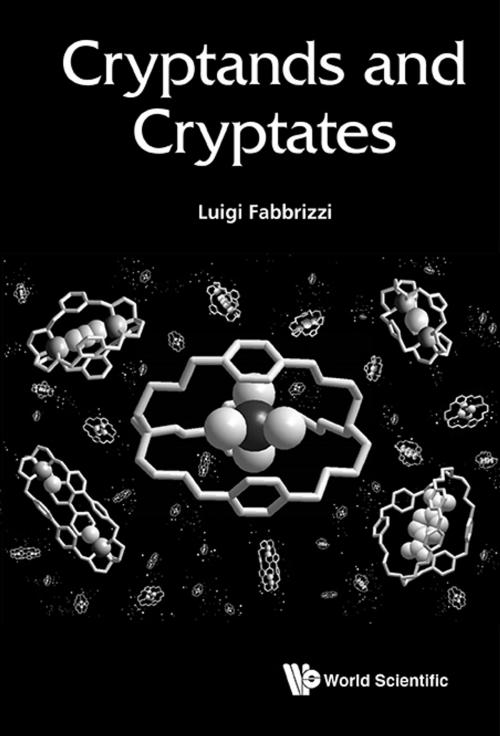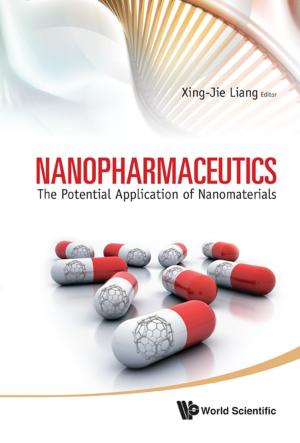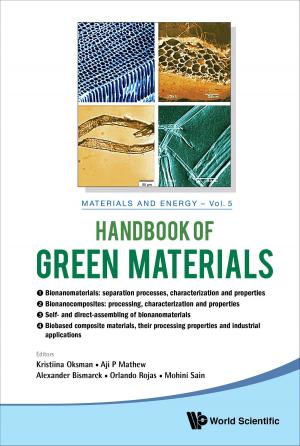Cryptands and Cryptates
Nonfiction, Science & Nature, Science, Chemistry, Organic, Biological Sciences, Biochemistry| Author: | Luigi Fabbrizzi | ISBN: | 9781786343710 |
| Publisher: | World Scientific Publishing Company | Publication: | November 8, 2017 |
| Imprint: | WSPC (EUROPE) | Language: | English |
| Author: | Luigi Fabbrizzi |
| ISBN: | 9781786343710 |
| Publisher: | World Scientific Publishing Company |
| Publication: | November 8, 2017 |
| Imprint: | WSPC (EUROPE) |
| Language: | English |
Cryptands were introduced by Jean-Marie Lehn in 1969 as cage-shaped selective ligands for alkali and alkaline-earth metal ions, which lie at the heart of supramolecular chemistry. This book reports on much of the research in the field since the '70s, and looks at, amongst other topics, metal coordination chemistry, anion coordination chemistry, the encapsulation and taming of reactive anions, the formation of cascade complexes and the design of fluorescent sensors for ionic analytes.
Cryptands and Cryptates has been written as a coursebook, structured as a series of lectures for graduate students or advanced researchers in chemistry, materials science, chemical biology and nanotechnology. It is fully illustrated to show experiments and results, and is intended to stimulate further interest in this fertile field of supramolecular chemistry.
Chapters are preceded by a Foreword by Jean-Marie Lehn.
Contents:
- The Beginning of the Story: Crown Ethers
- The Birth of Cryptands and Cryptates
- Recognition of the Radius of s-Block Metal Ions by Cryptands
- Competitive Hosts for Alkali Metal Ions: Spherands and Derivatives
- The Coordination Chemisty of Ammonium and Oxonium
- The Age of Anion Coordination Chemistry
- The Appearance of Bistren Cryptands
- Bistren Cryptands Grow and Multiply
- The Formation of Dicopper(II) Bistren Cryptates and the Nature of Their Cavity
- Anion Recognition by Dicopper(II) Bistren Cryptates: The Geometrical Factor
- Anion Fluorescence Sensing by Dimetallic Bistren Cryptates: The Fluorophore–Spacer–Receptor Paradigm
- Anion Fluorescence Sensing by Dimetallic Bistren Cryptates: The Indicator Displacement Paradigm
- Nucleotide Recognition and Sensing by a Dicopper(II) Bistren Cryptate
- Anion Inclusion by Hexaprotonated Bistrens: Halides
- Anion Inclusion by Hexaprotonated Bistrens: Oxoanions
- Recognition of Linear Dicarboxylates: The Hydrogen Bonding vs Metal–Ligand Interactions Contest
- Bistren Amides: Neutral Receptors That Recognise Anions Only Through Hydrogen Bonding Interactions
- The Taming of Peroxide (By a Bistren Amide Cryptand)
- Coordination Chemistry of the Smallest Bistren Cryptand
- Size Exclusion Selectivity: The Case of Fluoride
- Pseudo-Cryptands: Closing the Receptor's Cavity with a Transition Metal
- Use of Cryptands to Make Automatic Molecular Burettes
- Cages in Everyday Life, Chemistry and Art
Readership: Graduate students or advanced researchers in chemistry, materials science, chemical biology and nanotechnology.
Key Features:
- While review articles have been published on partial aspects of this topic, no books have been devoted to an overall and homogeneous treatment of 'cryptands and cryptates'
Cryptands were introduced by Jean-Marie Lehn in 1969 as cage-shaped selective ligands for alkali and alkaline-earth metal ions, which lie at the heart of supramolecular chemistry. This book reports on much of the research in the field since the '70s, and looks at, amongst other topics, metal coordination chemistry, anion coordination chemistry, the encapsulation and taming of reactive anions, the formation of cascade complexes and the design of fluorescent sensors for ionic analytes.
Cryptands and Cryptates has been written as a coursebook, structured as a series of lectures for graduate students or advanced researchers in chemistry, materials science, chemical biology and nanotechnology. It is fully illustrated to show experiments and results, and is intended to stimulate further interest in this fertile field of supramolecular chemistry.
Chapters are preceded by a Foreword by Jean-Marie Lehn.
Contents:
- The Beginning of the Story: Crown Ethers
- The Birth of Cryptands and Cryptates
- Recognition of the Radius of s-Block Metal Ions by Cryptands
- Competitive Hosts for Alkali Metal Ions: Spherands and Derivatives
- The Coordination Chemisty of Ammonium and Oxonium
- The Age of Anion Coordination Chemistry
- The Appearance of Bistren Cryptands
- Bistren Cryptands Grow and Multiply
- The Formation of Dicopper(II) Bistren Cryptates and the Nature of Their Cavity
- Anion Recognition by Dicopper(II) Bistren Cryptates: The Geometrical Factor
- Anion Fluorescence Sensing by Dimetallic Bistren Cryptates: The Fluorophore–Spacer–Receptor Paradigm
- Anion Fluorescence Sensing by Dimetallic Bistren Cryptates: The Indicator Displacement Paradigm
- Nucleotide Recognition and Sensing by a Dicopper(II) Bistren Cryptate
- Anion Inclusion by Hexaprotonated Bistrens: Halides
- Anion Inclusion by Hexaprotonated Bistrens: Oxoanions
- Recognition of Linear Dicarboxylates: The Hydrogen Bonding vs Metal–Ligand Interactions Contest
- Bistren Amides: Neutral Receptors That Recognise Anions Only Through Hydrogen Bonding Interactions
- The Taming of Peroxide (By a Bistren Amide Cryptand)
- Coordination Chemistry of the Smallest Bistren Cryptand
- Size Exclusion Selectivity: The Case of Fluoride
- Pseudo-Cryptands: Closing the Receptor's Cavity with a Transition Metal
- Use of Cryptands to Make Automatic Molecular Burettes
- Cages in Everyday Life, Chemistry and Art
Readership: Graduate students or advanced researchers in chemistry, materials science, chemical biology and nanotechnology.
Key Features:
- While review articles have been published on partial aspects of this topic, no books have been devoted to an overall and homogeneous treatment of 'cryptands and cryptates'















